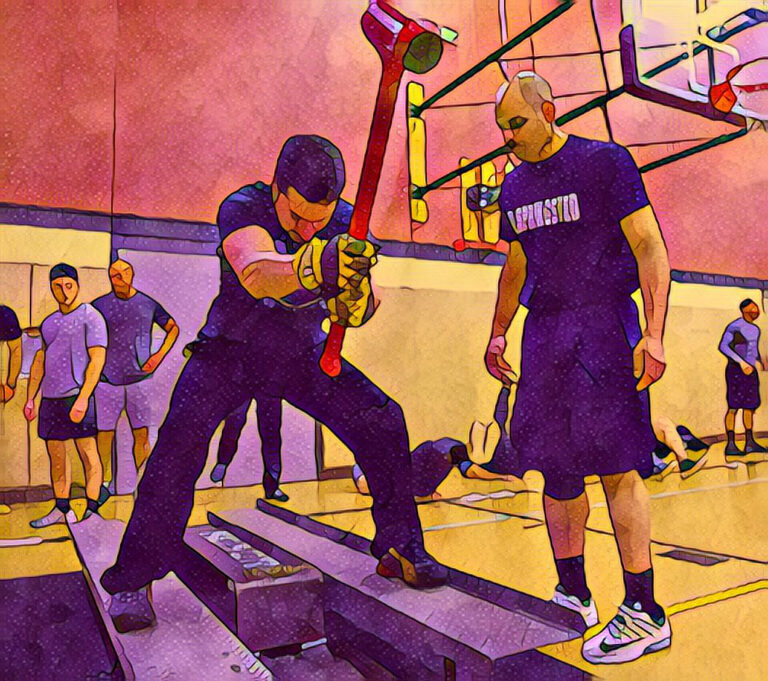When it comes to physical fitness for outdoor athletes, there’s no one-size-fits-all approach. Different sports and activities require different levels of physical ability and training. For example, a firefighter needs to be able to carry heavy gear and move quickly in dangerous situations, while a search and rescue team member may need to hike long distances with heavy equipment.
This specificity also applies to other outdoor athletes such as mountain climbers, trail runners, and adventure racers. Each activity requires a different set of physical skills and abilities.
When it comes to the fire department, physical fitness is not just about being able to lift heavy weights or run long distances. Firefighters need to have functional strength, agility, balance, and flexibility in order to perform their job effectively. This includes being able to crawl through narrow spaces, climb ladders, and carry a person in need of rescue.
Similarly, search and rescue teams also have specific physical requirements. These individuals need to be able to navigate rough terrain, carry heavy equipment for long periods of time, and work well under pressure. Their fitness level can mean the difference between a successful rescue and a potentially dangerous situation.
In essence, physical fitness for outdoor athletes is all about meeting the demands of their chosen activity. It’s not just about looking good or being able to lift heavy weights – it’s about having the right combination of strength, endurance, and agility to excel in a particular sport or job. So whether you’re a firefighter, search and rescue team member, or any other type of outdoor athlete, make sure to train specifically for the demands of your chosen pursuit. Your body will thank you and you’ll be better equipped to handle whatever challenges come your way.
The Importance of Cardiovascular Endurance
One of the most important aspects of physical fitness for outdoor athletes is cardiovascular endurance. This refers to the body’s ability to deliver oxygen and nutrients to working muscles, allowing them to perform at a high level for extended periods of time. In firefighting and SAR, having good cardiovascular endurance is essential. These individuals often have to work for long hours without breaks, whether it’s battling a raging fire or searching for a missing hiker. Without proper endurance, they may not be able to keep up with the demands of their job and put themselves and others at risk.
Strength and Muscular Endurance
In addition to cardiovascular endurance, having good strength and muscular endurance is also crucial for firefighters and SAR team members. These jobs require a lot of physical strength, whether it’s hauling heavy equipment or carrying an injured person to safety. Not only do they need strength, but they also need muscular endurance to sustain this strength throughout their tasks. This is especially important when dealing with prolonged rescue missions or fighting large-scale fires.
Flexibility and Mobility
Flexibility and mobility are often overlooked in terms of physical fitness for outdoor athletes, but they play a crucial role in SAR and firefighting. These individuals are constantly moving in unpredictable and challenging environments, and being flexible and mobile helps prevent injuries. Furthermore, flexibility and mobility also aid in performing certain tasks that require a wide range of motion, such as climbing ladders or navigating through tight spaces.
Mental Toughness
Aside from physical fitness, mental toughness is also an important aspect for individuals in SAR and firefighting. These jobs come with a lot of stress and require individuals to make quick decisions under pressure. Having mental toughness allows these individuals to push through physically demanding tasks, maintain focus during high-stress situations, and stay calm in the face of danger.
Training for Success
To ensure that they are physically prepared for their job, firefighters and SAR team members undergo rigorous training programs. These trainings focus on building and maintaining cardiovascular endurance, strength, flexibility, and mental toughness.
Moreover, these trainings are usually tailored to the specific demands of their job. For example, a firefighter may have different training exercises compared to a member of a mountain search and rescue team.
In conclusion, physical fitness is essential for individuals involved in SAR and firefighting. It not only helps prevent injuries, but it also ensures that they can effectively perform their duties. Through proper training and a focus on key fitness considerations, these brave individuals are able to take on the challenges of their jobs and save lives. So the next time you see a firefighter or a SAR team member, remember that behind their bravery and heroism is a physically fit individual who is ready to take on any challenge that comes their way. So if you’re considering a career in the fire department or search and rescue, be prepared to put your physical fitness to the test!
We’ll keep this conversation going over the next number of months!
Peace on your Days
Lance









